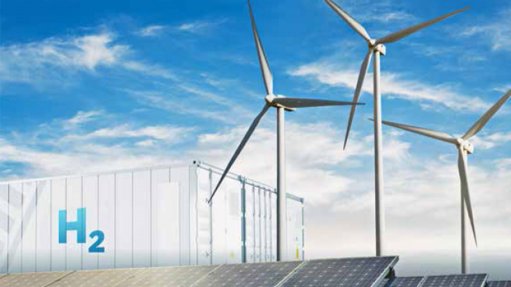
Boegoebaai has been earmarked as a possible hub for the production and export of green hydrogen and derivative products
South Africa’s Transnet National Ports Authority (TNPA) has initiated a preliminary process for the proposed development of a new deep-water port at Boegoebaai in the far Northern Cape near the Namibian border, which has been earmarked as a possible hub for the production and export of green hydrogen and derivative products.
The State-owned port landlord has released a request for qualification (RFQ) for the design, funding and construction of the proposed greenfield port and rail infrastructure as a precursor to a possible future request for proposals (RFP).
TNPA says the RFQ is intended to obtain information to shape the final solution as well as identify and select qualifying developers who could undertake the design, funding and construction of the port and associated infrastructure, including a rail solution to connect the port to mining and industrial hubs in the Northern Cape.
It indicates that a submission of an RFQ response, together with meeting the minimum capability criteria, is a compulsory requirement to participate in any subsequent RFP.
TNPA has set November 2 as the closing date for responses and will conduct a briefing session on August 16.
“The information sought through the RFQ is necessary for TNPA to chart a way forward in line with our strategic objective to operationalise a port in the region by 2026,” TNPA programme director Magenthran Ruthenavelu says.
He adds that the development of a port is a first step towards realising the country’s ‘Green Hydrogen Strategy’.
Although Boegoebaai has been identified as a key hub by President Cyril Ramaphosa for the development of a green-hydrogen sector, it faces competition from other domestic and regional locations, including Saldanha Bay in the Western Cape, Nelson Mandela Bay in the Eastern Cape, an emerging Hydrogen Valley linking Mogalakwena, Johannesburg and Durban and Lüderitz, in Namibia.
Boegoebaai has been earmarked as a Strategic Integrated Project by the Presidential Infrastructure Coordinating Commission Council, however, and Sasol, which has material green hydrogen ambitions of its own, confirmed last year that it had signed an agreement with the Northern Cape Development Agency to lead a feasibility study to explore the potential of the site as an export hub for green hydrogen and ammonia.
“Over and above the catalytic effect of new port and rail infrastructure to the local economy, the investment could also provide an additional, cost-effective channel to market for manganese exporters in the province,” Ruthenavelu says.
“It will bring much-needed relief to emerging miners who are currently restricted by high road transportation costs and no access to current export channels due to capacity constraints.”